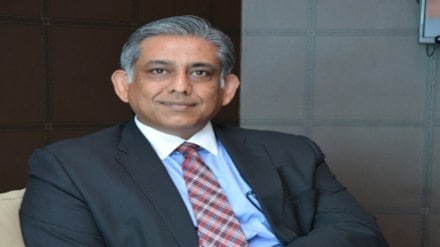Tata Consulting Engineers, the country’s largest private sector engineering and project consultancy firm, is growing at a robust 24-25% y-o-y, focusing on sectors like energy, transportation and others. Amit Sharma, MD and CEO, talks to Raghavendra Kamath about the future of nuclear energy and the company’s growth strategy. Edited excerpts:
After the government push for private participation in nuclear energy, do you think companies have been actively pursuing it?
I have been interacting with almost every interested player in India. There are six to seven conglomerates and few others exploring this space, and they have been interacting with us. I think there is a strong interest in terms of commercial and business proposition, and the fact that it provides base load continuity and clean energy.
The sector was completely and exclusively government-controlled until now. The main challenge for private companies is liability, insurance and project timelines. Private companies entering this sector want to ensure they are protected against any risks. The first priority is having a proper insurance coverage for both existing and future liabilities, which is crucial for their participation. This is a valid concern globally — any private player entering this sector would want safeguards.
As things stand, the law does not yet allow private sector participation, though the government has promised changes in the upcoming monsoon session. Companies are evaluating multiple aspects —business viability, return on investment and even potential reputational risks.
A major concern is Clause 46 of the Civil Liability for Nuclear Damage Act (CLNDA), 2010, which imposes unlimited liability. This is currently under consideration for revision to align with global standards.
Can nuclear energy play a meaningful role in meeting the country’s rising power demand?
I absolutely believe in it. For instance, solar energy requires 5-6 acres per megawatt, but cannot provide a base load. But yes, its infrastructure can be built rapidly. However, whether it is truly carbon-neutral is debatable because manufacturing solar panels and cells has a significant carbon footprint. Wind energy faces similar issues. It’s not really providing base load and the true carbon footprint analysis is not really positive either. The two most sustainable energy sources are hydro and nuclear. Hydropower strategies, including pumped storage projects (PSPs) and mini/macro hydro projects, have already gained momentum. Nuclear energy is going to play a crucial role, especially for a country like India, which is not just trying to decarbonise existing energy demand but also preparing for future demand growth.
Today, India requires about 7,000 terawatt-hours (TWh) of energy, a figure expected to quadruple to 24,000 TWh by 2047. Currently, nuclear accounts for just 3% of our energy mix.
To maintain balance, nuclear must contribute at least 10-15% of the base load. So, I think nuclear must co-exist alongside solar, win, and hydro.
What are the growth targets for FY25 and beyond?
For the last 3-4 years, post-pandemic, we have been growing at 24-27%. Our growth used to be in the range of 15-18% before that. We want to continue this momentum for the next two years.
Since our US acquisition was finalised in January 2025, this year’s books will only reflect three months of the revenue from there. This year, we will do a topline of about Rs 2,000 crore in pure design engineering. We do not do contracts, EPC and procurement.
We will close FY26 with revenues of Rs 3,000 crore and upward of Rs 4,000 crore in the following year. Our aim is to maintain the 20+ y-o-y growth rate over the next couple of years and touch a meaningful milestone of Rs 5,000 crore, followed by a billion-dollar revenue in the next three to five years.
Nuclear is one part. What are your other key areas of growth?
We have a multi-pronged strategy. We have the energy and power segment, which includes nuclear, thermal, battery storage, solar, hydro, etc. Our focus here is definitely on PSPs and we are doing maximum pump storage, coupled with solar and wind, for the future growth strategy.
The second part of our business is reprocessing resources. Hydrocarbon, specialty chemicals, advanced manufacturing like semiconductors, battery ecosystem and metal and mines. This sector has are two parts: one is the minerals of the future, which is primarily lithium and rare earth materials for magnets because they are required in electric motors; second, with the increase in electrification, there is strong demand for copper and aluminum and so currently we are doing many projects both in India and outside both on copper and aluminum. This sector also include semiconductor projects, both for our own group data electronics, but also for other firms in India and outside.
The third one is infrastructure, which is basically about transportation, buildings, hospitals, urbanisation, water and so on. We’re doing the high-speed rail. Besides our involvement in Mumbai to Ahmedabad bullet train as project management consultants for civil work, there are five more high speed corridors identified which are in second stage of approvals.
Are you in talks with states to do urban transportation projects in metros or other tier 1 cities?
Yes, we recently concluded the Agra Metro project, where we served as detailed design consultants.
In Mumbai, we are working on multiple tunnel projects under the MMRDA jurisdiction, connecting the eastern and western parts of the city. We are also working on certain areas in terms of highway corridors. We focus on complex transportation projects, such as tunnels, rather than generic road projects.
Additionally, we are strong partners with ISRO and are involved in indigenisation efforts for the Indian Navy.
